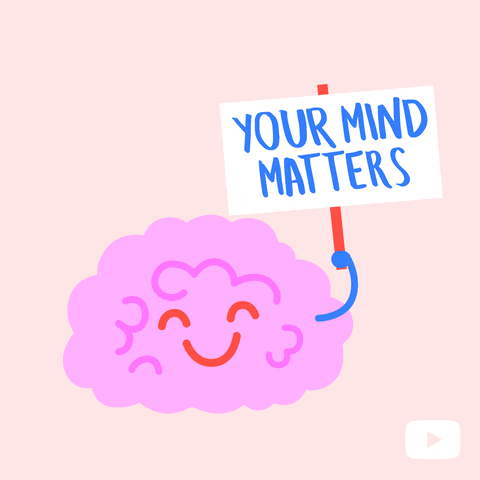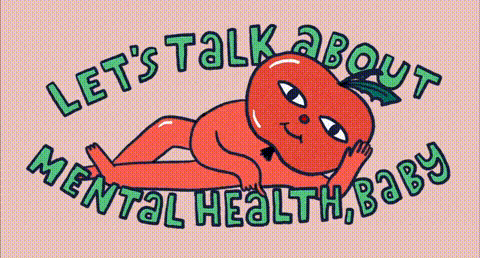Ketamine Therapy: A Revolutionary Treatment for Depression and Mental Health Issues
The Power of Ketamine: A New Frontier in Mental Health Treatment

Over time, we have witnessed the evolution of ketamine from its origins as a dissociative anesthetic as a revolutionary treatment for a wide range of mental health conditions. Initially developed in the 1960s as a safer alternative to phencyclidine, ketamine has been used primarily in veterinary and pediatric anesthesia due to its rapid onset of action and short duration of effects. However, in recent years, the medical community has recognized ketamine's potential as a therapeutic agent for the treatment of depression, post-traumatic stress disorder (PTSD), and other mental health conditions.
Could ketamine be the key to revolutionizing mental health treatment? We’ll share in this post numerous studies and clinical trials that have demonstrated the efficacy of ketamine in reducing symptoms of depression and PTSD. The data is clear: ketamine has emerged as a promising treatment option when used in controlled clinical settings. Its ability to rapidly alleviate symptoms of depression and PTSD, often in a matter of hours, has been a game-changer for patients who have struggled with these conditions for years. In this article, we will delve deeper into the science behind ketamine's therapeutic effects, exploring its mechanisms of action, the current state of research, and the potential for ketamine to transform the treatment landscape for mental health disorders.
Ketamine Therapy: The Path to Mental Wellness
Picture this: a single dose of ketamine, administered intravenously, sparking rapid relief from the heavy burden of depression within hours. Landmark studies have illuminated the path, showcasing the profound antidepressant effects of ketamine that linger for weeks, offering hope where traditional treatments falter.
Ketamine, once a dissociative anesthetic, has emerged as a revolutionary treatment for depression, PTSD, and other mental health conditions. With its rapid onset of action and transient effects, ketamine has shown promising results in reducing symptoms of depression and PTSD.
Numerous clinical studies have consistently demonstrated the rapid antidepressant effects of ketamine. For instance, a landmark study by Berman et al. (2006) reported that a single subanesthetic dose of intravenous ketamine produced antidepressant effects within hours in patients with major depressive disorder (MDD). Subsequent studies have confirmed the rapid and prolonged antidepressant effects of ketamine, with some patients experiencing relief lasting up to several weeks.
But the benefits of ketamine therapy extend far beyond the realm of depression. This versatile compound has also emerged as a beacon of hope for individuals grappling with post-traumatic stress disorder (PTSD), anxiety, and other mental health challenges. A study published in the Journal of Clinical Psychology revealed the impact of ketamine infusion therapy, with participants experiencing a staggering 60-100% reduction in symptoms of depression, anxiety, and PTSD-related conditions.
The true power of ketamine therapy, however, is best captured in the testimonials of those who have experienced its transformative effects firsthand. Imagine the relief of a patient who felt "completely transformed" after a single ketamine infusion, declaring that the treatment had "given me my life back." These powerful narratives underscore the impact of this revolutionary approach to mental health care.

How Ketamine Transforms the Mind
This compound navigates the intricate dance of neurotransmitters, acting as a non-competitive antagonist at the NMDA receptor to modulate glutamate levels and ignite a cascade of healing. Moreover, ketamine's ability to promote neuroplasticity and synaptogenesis - the growth and formation of new neural connections - offers a glimpse into its potential to not only alleviate symptoms but also foster long-term, sustainable well-being.
Ketamine works quickly, unlike traditional meds that can take ages to kick in. Whether through an IV drip for serious cases or a nasal spray for milder ones, ketamine gets the job done. It's a game-changer for mental health, offering rapid relief, especially for tough cases.
From the initial screening and evaluation to the transformative sessions themselves, this revolutionary treatment creates a profound shift in the lives of those struggling with mental health challenges.
The first step in the ketamine therapy process is a comprehensive screening and evaluation to ensure patients are eligible candidates. A team carefully assesses each individual's medical history, mental health status, and any potential risk factors. This meticulous approach allows the experts to create a personalized treatment plan that maximizes the benefits while prioritizing safety.
With the groundwork laid, the specialist focuses on preparing the patient for their ketamine experience. The set and setting play a crucial role, creating a serene, comfortable environment that fosters a sense of safety and trust. Soft lighting, soothing music, and the presence of the staff all contribute to a therapeutic atmosphere where the patient can feel relaxed.
As the ketamine infusion or intranasal administration begins, patients often report a dissociative experience – a temporary sense of detachment from their physical body and the external world. This altered state of consciousness allows the mind to explore uncharted territories, often leading to deep insights and emotional breakthroughs. Skilled clinicians are there every step of the way, guiding patients through this transformative process and providing the necessary support for integration.
Typical treatment protocols for ketamine therapy involve a series of sessions, with the number and frequency tailored to each individual's needs. Some patients may require a single infusion to achieve the desired results, while others may benefit from a course of several treatments. Regardless of the specific protocol, the goal remains the same: to provide rapid, sustained relief from the debilitating symptoms of conditions like depression, PTSD, and anxiety.
By ensuring an organized process in this therapy, this remarkable compound has the power to unlock new pathways to wellness, offering hope and transformation to those who have long struggled with mental health challenges.
Navigating the Path of Ketamine Therapy: Balancing Promise and Precaution
Let's acknowledge both the remarkable benefits and the potential risks associated with this treatment. While the efficacy of ketamine in addressing mental health conditions like depression, anxiety, and PTSD has been well-documented, it's essential to approach its use with a keen understanding of the safety considerations.
At the heart of safe ketamine therapy lies the importance of professional administration and close monitoring. Healthcare providers with expertise in this field play a vital role in guiding patients through the process, ensuring that the benefits of ketamine are maximized while the risks are minimized. This approach is crucial, as the use of ketamine in clinical settings can potentially lead to increased blood pressure, respiratory issues, and urinary tract problems.
The recreational or inappropriate use of this drug can also pose significant risks, such as psychological dependence and cognitive impairment. These potential side effects underscore the need for individuals to use ketamine only as prescribed and under the supervision of qualified healthcare professionals.
Long-term use of ketamine, whether in a clinical or recreational setting, can also lead to physical and mental dependence, which can be challenging to overcome.
It's essential that patients undergo thorough screening, receive personalized care, and are closely monitored throughout the process, healthcare providers can help mitigate the potential risks and maximize the benefits of ketamine therapy.
While ketamine is not FDA-approved for the treatment of any psychiatric disorder, it has been used off-label for various mental health conditions, including depression, anxiety, and post-traumatic stress disorder (PTSD). This off-label use has led to the establishment of ketamine clinics and the development of ketamine-assisted therapy, which involves the administration of low doses of ketamine in conjunction with psychotherapy sessions.
The future of ketamine in mental health care remains a complex and evolving landscape. By approaching this treatment with a combination of hope and vigilance, we can unlock the transformative potential of ketamine while prioritizing the safety and well-being of those seeking relief from their mental health challenges.
The Transformative Power of Ketamine Therapy
Meet Nerea, a spirited 35-year-old who had been locked in a relentless battle with depression for what felt like an eternity. Despite the medications and therapies, the shadows seemed to deepen around her.
In one of her efforts, Nerea turned to ketamine therapy, a whispered promise of relief for her treatment-resistant depression. Nervous but determined, she stepped into the fragile thread of hope that was this treatment.
During her first ketamine session, Nerea felt a sense of calm wash over her as the medication took effect. In the midst of the dissociative experience, she found herself confronting deep-seated emotions and memories, guided by the supportive presence of her healthcare provider. As the session concluded, Nerea emerged with a newfound sense of clarity and lightness, a weight lifted from her shoulders. With each session, Nerea felt herself reclaiming pieces of herself that had long been lost to the depths of depression.
Today, Nerea stands as a testament to the transformative power of ketamine therapy, her journey a beacon of resilience and renewal in the face of mental health challenges.

Your Top Questions Answered
What is Ketamine and How Does it Work?
Ketamine is a remarkable compound that has captured the attention of the medical community for its transformative potential in mental health treatment.
Far from just a simple anesthetic, ketamine acts as a masterful antagonist at the NMDA receptor, orchestrating a symphony of neurotransmitters to uplift mood, reduce symptoms of depression and anxiety, and foster a sense of renewal. By modulating the levels of glutamate, a key neurotransmitter in the brain, ketamine ignites a cascade of neuroplastic changes, allowing the mind to forge new neural pathways and break free from the shackles of debilitating mental health conditions.
Is Ketamine Therapy Covered by Insurance?
The question of insurance coverage for ketamine therapy is a complex one, with policies varying widely across providers and regions. While some insurers may recognize the immense value of this innovative treatment and offer coverage, others may still be hesitant to do so. It's crucial for individuals interested in ketamine therapy to engage in a thoughtful dialogue with their healthcare providers and insurance companies to explore the available options and navigate the nuances of reimbursement.
By working collaboratively, we can unlock the doors to accessible and affordable ketamine therapy, ensuring that those in need can embark on their transformative journeys without the added burden of financial constraints.
What are the Potential Side Effects of Ketamine Therapy?
As with any medical intervention, it's essential to be aware of the potential side effects associated with ketamine therapy. While ketamine is generally well-tolerated, some individuals may experience temporary increases in blood pressure, respiratory issues, or urinary tract symptoms. However, it's important to note that these side effects are meticulously monitored and managed by experienced healthcare providers during the treatment process.
The safety and well-being of patients are of the utmost priority, and the benefits of ketamine therapy have been shown to far outweigh the risks when administered in a controlled clinical setting. By working closely with qualified professionals, individuals can navigate the ketamine therapy journey with confidence, knowing that their needs and concerns are being addressed with the utmost care and diligence.
How Long Does it Take to See Results from Ketamine Therapy?
The timeline for experiencing the effects of ketamine therapy can vary from person to person. While some individuals may notice improvements in their symptoms shortly after the first session, others may require multiple sessions to achieve significant relief. Generally, the rapid onset of action associated with ketamine therapy means that many patients report feeling a noticeable difference within hours or days of treatment. This swift response is one of the key advantages of ketamine over traditional antidepressants, which can take weeks or even months to show results. It's important to communicate openly with your healthcare provider about your progress and any changes you may be experiencing during the course of treatment.
By staying engaged and proactive in your therapy journey, you can work together to optimize the benefits of ketamine and tailor the treatment plan to best suit your individual needs.
Key Takeaways
- Ketamine therapy offers rapid relief for mental health conditions like depression, anxiety, and PTSD, with effects often appearing within hours of treatment initiation.
- Personal stories of transformation through ketamine therapy highlight its profound impact on individuals, showcasing hope, resilience, and healing.
- Ketamine therapy is more than a medical intervention; it serves as a catalyst for profound change, allowing individuals to rewrite their stories of suffering and embark on unique healing journeys.
- Ketamine therapy can help individuals access new perspectives, break free from negative thought patterns, and foster lasting personal growth and transformation.
- The safety profile of ketamine therapy is well-established, with the drug being FDA-approved for specific indications like depression.
- Ketamine's ability to increase neuroplasticity and reduce activity in the default mode network (DMN) allows for a broad range of therapeutic applications beyond depression.
- Ketamine treatments are less frequent compared to traditional psychiatric medications, resulting in fewer side effects for individuals undergoing therapy.
- The guided ketamine experience aims to create a psychedelic state of consciousness, facilitating mental rejuvenation, self-discovery, stress reduction, and enhanced social intelligence.
- Ketamine therapy equips individuals with tools for lasting growth, encouraging active participation in personal development and optimization of lifestyle.
- The transformative potential of ketamine therapy lies in its ability to pave the way for a life unburdened by anxiety, trauma, and depression, offering a beacon of hope for those seeking relief from mental health challenges.

Thank you for reading this post!
If you found it helpful or informative, please consider sharing a 7 day free trial with your friends, family, or colleagues who might benefit from it.
Your support helps me reach more people and spread awareness on important topics like this. Together, we can make a difference!
References
https://www.ncbi.nlm.nih.gov/books/NBK487464/
https://www.ncbi.nlm.nih.gov/books/NBK253852/
https://www.ncbi.nlm.nih.gov/pmc/articles/PMC6007659/
https://www.ncbi.nlm.nih.gov/pmc/articles/PMC6007659/
https://www.ncbi.nlm.nih.gov/pmc/articles/PMC6007659/
https://www.ncbi.nlm.nih.gov/pmc/articles/PMC6007659/
https://www.ncbi.nlm.nih.gov/pmc/articles/PMC6007659/
https://www.ncbi.nlm.nih.gov/pmc/articles/PMC6007659/
https://www.ncbi.nlm.nih.gov/pmc/articles/PMC6007659/
https://www.ncbi.nlm.nih.gov/pmc/articles/PMC6007659/
https://www.ncbi.nlm.nih.gov/pmc/articles/PMC6007659/
https://www.ncbi.nlm.nih.gov/pmc/articles/PMC6007659/
https://www.ncbi.nlm.nih.gov/pmc/articles/PMC6007659/
https://www.ncbi.nlm.nih.gov/pmc/articles/PMC6007659/
https://www.ncbi.nlm.nih.gov/pmc/articles/PMC6007659/
https://www.ncbi.nlm.nih.gov/pmc/articles/PMC6007659/
https://www.ncbi.nlm.nih.gov/pmc/articles/PMC6007659/
https://www.ncbi.nlm.nih.gov/pmc/articles/PMC6007659/
https://www.ncbi.nlm.nih.gov/pmc/articles/PMC6007659/
https://www.ncbi.nlm.nih.gov/pmc/articles/PMC6007659/
https://www.ncbi.nlm.nih.gov/pmc/articles/PMC6007659/
https://www.ncbi.nlm.nih.gov/pmc/articles/PMC6007659/
This article was written by Ariadna Paniagua, an experienced writer and editor for several institutions, papers, and websites.




